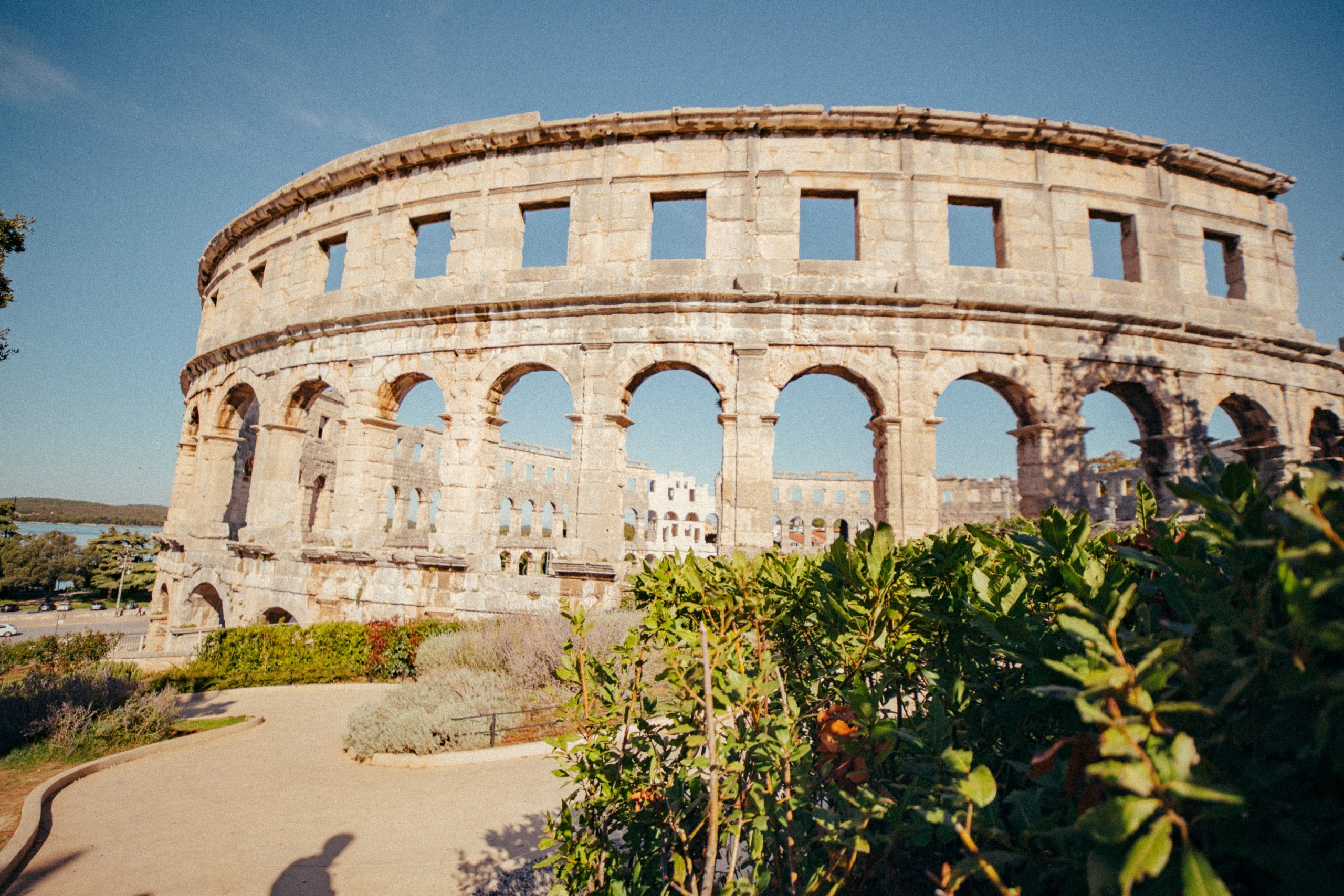
Premantura
Ten kilometres away from the house you will find beautiful Premantura, a small village in the more southern Peninsula of Istria, where you can visit Saint Lawrence church, built in 1632, Porer lightouse (rentable in summertime), and Fenoliga island, in which are visible ancient traces of the dinosaurs.
A few kilometres away there is Cape Kamenjak natural park, a protected area with 30 kilometres of jagged coasts, where is possible to discover the unique nature and more than 500 species of plants, many of which are endemic. Premantura is suitable also for make some dives from the high cliffs or
enjoy different aquatic sports as surf and windsurf.
Nesazio
Nesazio, despite not having the fame or the magnificence of the Arena of Pula, is a small and hidden treasure. We reccomend a visit in this place, which tells a story dating back at the first roman expansion in the area. Nesazio was the biggest village of the ancient population of the Istri, from which the istrian peninsula took name. In 177 b.c this fortified centre was one of the last to fall under roman domination, after a long siege. The story was remembered by two of the most important roman historian, Ennio and Livio, in his famous “Ad Urbe Condita”. The city became a roman castle but lost its importance in favour of Pola, which became the main roman city in the zone. We know that Nesazio continued to live in pre-christhian and bizantine era, and the foundation of two basilicas prove that. It was probably abandoned after the VI century, because of the slavs invasions that destroyed the village. Today a large part of the foundations is visible, the most important are the two basilicas and the temples of the roman forum. There is a small and free museum which contains some information about the history and photos of the archeological campain during the first years of the '900. Nesazio is easy to reach with a short trip with the car following the indication for Valtura.


Pola
The city of Pula, flourishing during the Roman Empire and after under the Republic of Venice, it's nowadays an ideal place for tourism and shopping. The roman Arena, worldwide famous and symbol of the city it's completely conserved, today it hosts concerts and shows. Other roman “vestigia” are visible in the city centre, as The Arch of the Sergis and the Temple of Augustus.
In The “pedonali” streets of the centre you can find many typical shops, bar's and restaurants, with a rich and colorfoul fruit and vegetables market which is open everyday. On the highest point of the town there is the Venetian Castle, founded, which hosts an historic museum and offers a complete panorama of the surrounding zone. Pola is easy to reach in a few minutes by car or whit the local autobus service.
Fasana/ Isole Brijuni
The small village of Fasana, reachable by car in twenty minutes, recall many tourists every summer. The centre of this fishermans village has its originns during the roman time and is very fashionable and full of life and cultural events. The seaside looks directly to Brioni Islands. From here you can take the ferry boat which, with a short trip, reaches the small harbour located on Veliki Brijun (Great Brioni). The whole archipelago was the summer residence of Tito, but now is a natural park, with no cars or motorbikes. The only people who can stay on the night are the guests of the two hotels near the harbour. Using the ferry ticket you can enjoy the guided tour whic takes you around the island on an electric train and focuses on the main attractions, as the safari park, the Tito museum and the golf course, full of secular trees. Our advice is however to rent a bike (there is an official store near the harbour) and take the full day to visit the island in a free way. You can discover some gems as the majestic ruins of a roman villa, or just relax and read a book under the shadows of beautiful trees. The other islands of the archipelago are visitable using some tour operators located on Fasana seaside.


Bale
Il piccolo villaggio di Bale, situato tra le verdi colline del centro dell’Istria, si trova a circa metà strada tra Pola e Rovigno. Il suo centro storico conserva i caratteri tipici dell’architettura della Zona, con le strade lastricate e i palazzi in pietra bianca.
Nella piccola piazza principale sorge l’imponente facciata del castello Soardo-Bembo, costruito nel XVI secolo e completamente ristrutturato nel 2012. Tra le strette vie si trovano molti negozi che vendono prodotti tipici della zona, come il miele, la lavanda, le marmellate e le innumerevoli qualità di grappa. La chiesa della Beata Vergine Maria domina nel punto più alto del paese; qui è possibile visitare la cripta che conserva i resti in pietra delle precedenti e più antiche chiese che erano state edificate nello stresso punto.
Segnaliamo inoltre il locale bohemienne Kamene Price, dove ci si può fermare per una buona cena preparata sul momento, accompagnata dai vini locali.
